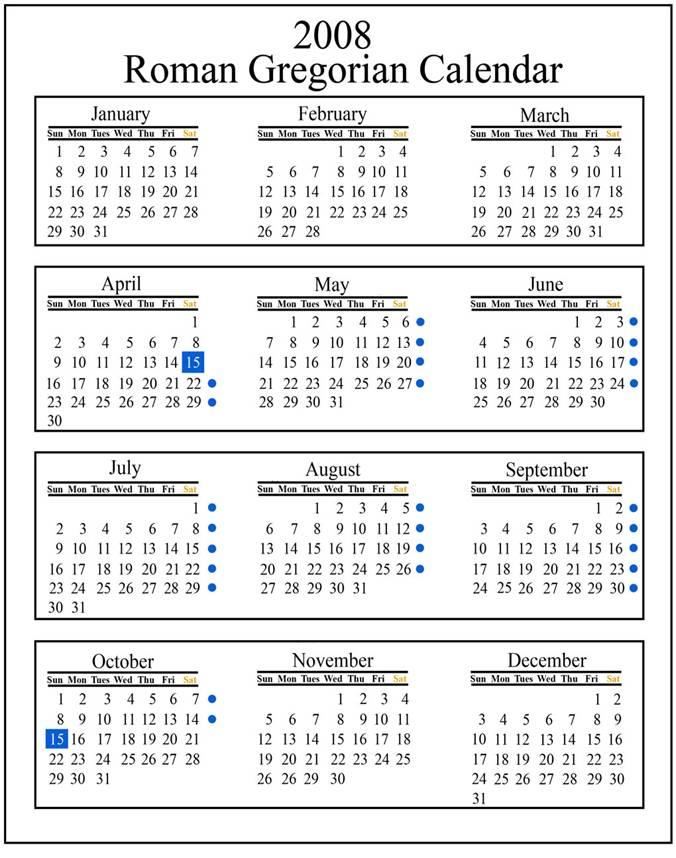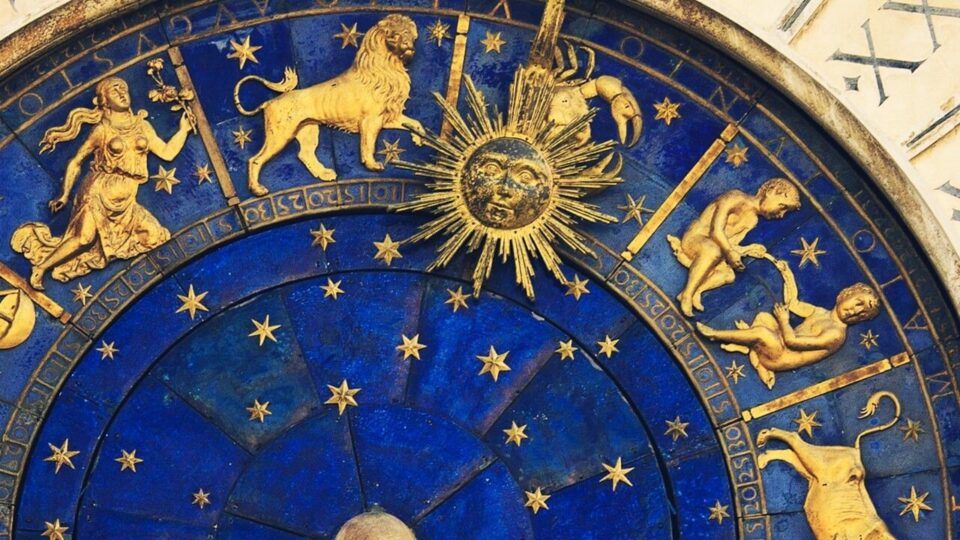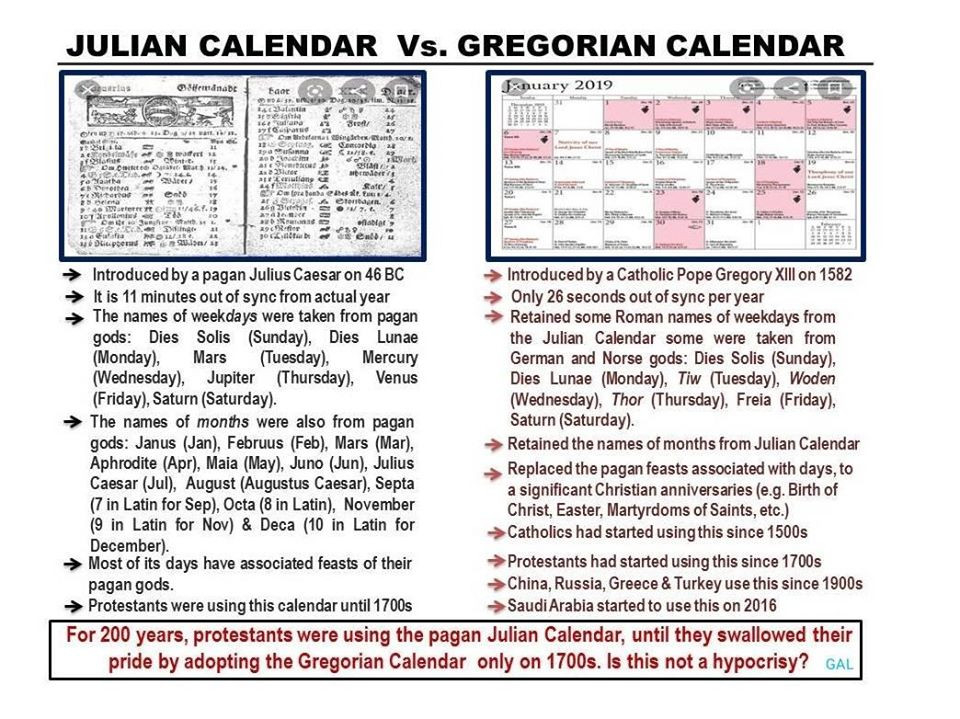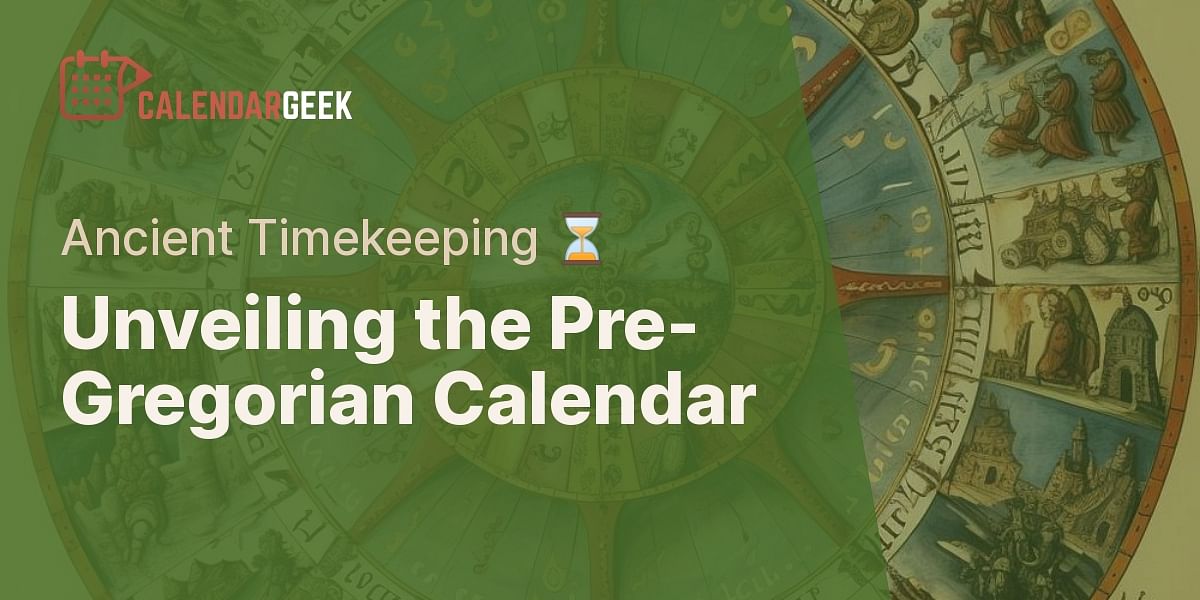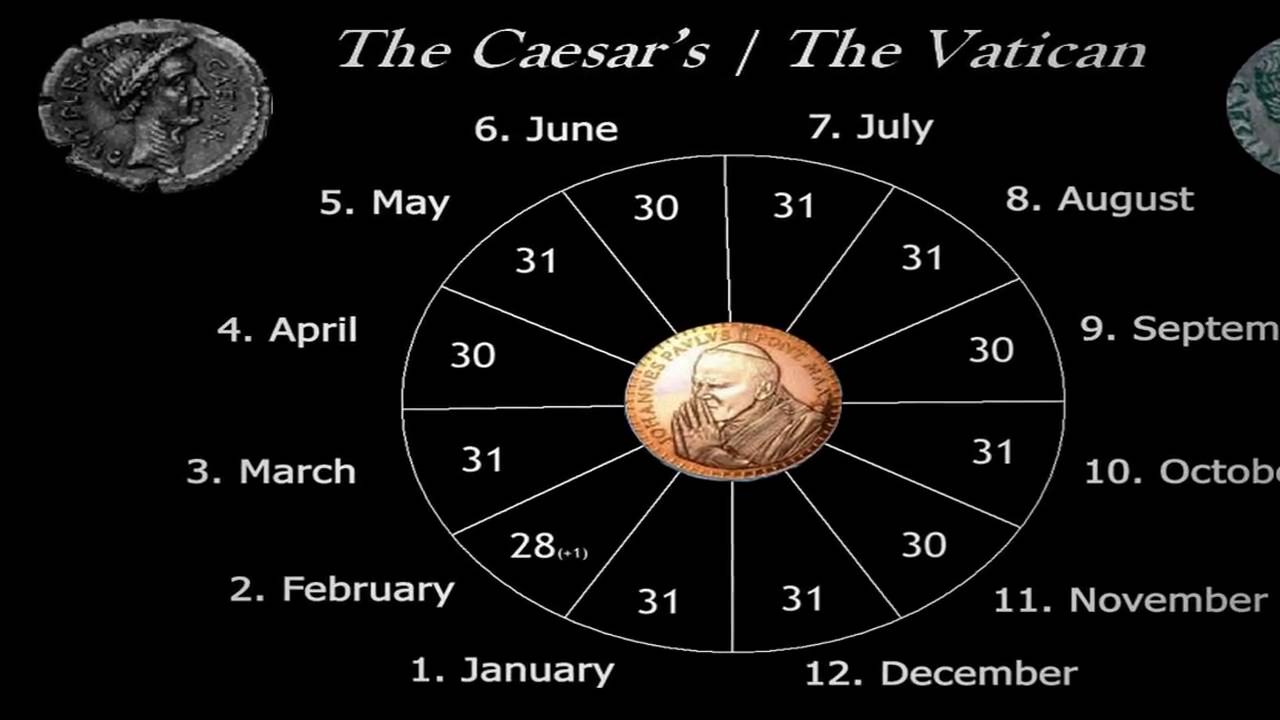Before The Gregorian Calendar
Before The Gregorian Calendar - The gregorian calendar is the calendar used in most parts of the world. Web although the gregorian calendar is named after pope gregory xiii, it is an adaptation of a calendar designed by luigi lilio (also known as aloysius lilius), who was an italian. For more than 16 centuries this. Web the reform, which established what became known as the gregorian calendar and laid down rules for calculating the date of easter, was well received by. Pope gregory xiii introduced the gregorian calendar in 1582. Web in classical antiquity, the hellenic calendars inspired the roman calendar, including the solar julian calendar introduced in 45 bc. The history of calendars covers practices with ancient roots as people created and used various methods to keep track of days and larger divisions of time. The idea of numbering years beginning from the date that he believed to be the date of birth of jesus, was conceived around the year 525 by the christian monk. The natural units for timekeeping used by most historical societies are the Archeologists have reconstructed methods of timekeeping that go back to prehistoric times at least as old as the neolithic.
Web in classical antiquity, the hellenic calendars inspired the roman calendar, including the solar julian calendar introduced in 45 bc. The natural units for timekeeping used by most historical societies are the Lilius’s correction, introduced during the papacy of gregory xiii, meant at last that the. Web pope gregory xiii issued a papal bull, inter gravissimus on february 24, 1582 that established the gregorian calendar as the new and official calendar of the. Web while the civil administrations of eastern european countries adopted the gregorian calendar in the 1910s or early 1920s, none of the national eastern orthodox churches. For more than 16 centuries this. The idea of numbering years beginning from the date that he believed to be the date of birth of jesus, was conceived around the year 525 by the christian monk. Web although the gregorian calendar is named after pope gregory xiii, it is an adaptation of a calendar designed by luigi lilio (also known as aloysius lilius), who was an italian. It went into effect in october 1582 following the papal bull inter gravissimas issued by pope gregory xiii, which introduced it as a modification of, and replacement for, the julian calendar. Calendars commonly serve both cultural and practical purposes and are often connected to astronomy and agriculture.
Web in classical antiquity, the hellenic calendars inspired the roman calendar, including the solar julian calendar introduced in 45 bc. The gregorian calendar is the calendar used in most parts of the world. The idea of numbering years beginning from the date that he believed to be the date of birth of jesus, was conceived around the year 525 by the christian monk. The natural units for timekeeping used by most historical societies are the Archeologists have reconstructed methods of timekeeping that go back to prehistoric times at least as old as the neolithic. Calendars commonly serve both cultural and practical purposes and are often connected to astronomy and agriculture. Web before the inception of the gregorian calendar western civilization depended on a system instituted by jul ius caesar, called the julian calendar. Web the introduction of the gregorian calendar set the seal on the calendar’s development. Lilius’s correction, introduced during the papacy of gregory xiii, meant at last that the. For more than 16 centuries this.
Was there a leap year before the Gregorian calendar? YouTube
Archeologists have reconstructed methods of timekeeping that go back to prehistoric times at least as old as the neolithic. Many modern calendar proposals, including. Calendars commonly serve both cultural and practical purposes and are often connected to astronomy and agriculture. The history of calendars covers practices with ancient roots as people created and used various methods to keep track of.
What Calendar Did We Use Before The Gregorian Grace Karleen
Calendars commonly serve both cultural and practical purposes and are often connected to astronomy and agriculture. Web although the gregorian calendar is named after pope gregory xiii, it is an adaptation of a calendar designed by luigi lilio (also known as aloysius lilius), who was an italian. For more than 16 centuries this. Web before the inception of the gregorian.
What Calendar Did We Use Before The Gregorian Grace Karleen
Web although the gregorian calendar is named after pope gregory xiii, it is an adaptation of a calendar designed by luigi lilio (also known as aloysius lilius), who was an italian. For more than 16 centuries this. Web the introduction of the gregorian calendar set the seal on the calendar’s development. It went into effect in october 1582 following the.
What Was Before Gregorian Calendar Carri Cristin
For more than 16 centuries this. Web in classical antiquity, the hellenic calendars inspired the roman calendar, including the solar julian calendar introduced in 45 bc. Pope gregory xiii introduced the gregorian calendar in 1582. Archeologists have reconstructed methods of timekeeping that go back to prehistoric times at least as old as the neolithic. Web before the inception of the.
What calendar system was used before the Gregorian calendar?
The idea of numbering years beginning from the date that he believed to be the date of birth of jesus, was conceived around the year 525 by the christian monk. Web while the civil administrations of eastern european countries adopted the gregorian calendar in the 1910s or early 1920s, none of the national eastern orthodox churches. It went into effect.
Which calendar was used before the Gregorian calendar (the current
For more than 16 centuries this. Many modern calendar proposals, including. The history of calendars covers practices with ancient roots as people created and used various methods to keep track of days and larger divisions of time. Web before the inception of the gregorian calendar western civilization depended on a system instituted by jul ius caesar, called the julian calendar..
What Calendar Did We Use Before The Gregorian Grace Karleen
Web pope gregory xiii issued a papal bull, inter gravissimus on february 24, 1582 that established the gregorian calendar as the new and official calendar of the. The natural units for timekeeping used by most historical societies are the Web in classical antiquity, the hellenic calendars inspired the roman calendar, including the solar julian calendar introduced in 45 bc. For.
Gregorian Calendar Historical Easter Eggs Today in History
Web in classical antiquity, the hellenic calendars inspired the roman calendar, including the solar julian calendar introduced in 45 bc. Web before the inception of the gregorian calendar western civilization depended on a system instituted by jul ius caesar, called the julian calendar. Pope gregory xiii introduced the gregorian calendar in 1582. Web pope gregory xiii issued a papal bull,.
What calendar did Europe use before the modern Gregorian calendar
The idea of numbering years beginning from the date that he believed to be the date of birth of jesus, was conceived around the year 525 by the christian monk. The original goal of the gregorian calendar was to change the date of easter. Calendars commonly serve both cultural and practical purposes and are often connected to astronomy and agriculture..
What Calendar Did We Use Before The Gregorian Calendar Rene Vallie
Calendars commonly serve both cultural and practical purposes and are often connected to astronomy and agriculture. It went into effect in october 1582 following the papal bull inter gravissimas issued by pope gregory xiii, which introduced it as a modification of, and replacement for, the julian calendar. For more than 16 centuries this. The gregorian calendar is the calendar used.
Web Before The Inception Of The Gregorian Calendar Western Civilization Depended On A System Instituted By Jul Ius Caesar, Called The Julian Calendar.
Archeologists have reconstructed methods of timekeeping that go back to prehistoric times at least as old as the neolithic. Calendars commonly serve both cultural and practical purposes and are often connected to astronomy and agriculture. Web the reform, which established what became known as the gregorian calendar and laid down rules for calculating the date of easter, was well received by. Web although the gregorian calendar is named after pope gregory xiii, it is an adaptation of a calendar designed by luigi lilio (also known as aloysius lilius), who was an italian.
Many Modern Calendar Proposals, Including.
The gregorian calendar is the calendar used in most parts of the world. The idea of numbering years beginning from the date that he believed to be the date of birth of jesus, was conceived around the year 525 by the christian monk. For more than 16 centuries this. The original goal of the gregorian calendar was to change the date of easter.
Pope Gregory Xiii Introduced The Gregorian Calendar In 1582.
It went into effect in october 1582 following the papal bull inter gravissimas issued by pope gregory xiii, which introduced it as a modification of, and replacement for, the julian calendar. The history of calendars covers practices with ancient roots as people created and used various methods to keep track of days and larger divisions of time. Web while the civil administrations of eastern european countries adopted the gregorian calendar in the 1910s or early 1920s, none of the national eastern orthodox churches. Web the introduction of the gregorian calendar set the seal on the calendar’s development.
Web In Classical Antiquity, The Hellenic Calendars Inspired The Roman Calendar, Including The Solar Julian Calendar Introduced In 45 Bc.
Web pope gregory xiii issued a papal bull, inter gravissimus on february 24, 1582 that established the gregorian calendar as the new and official calendar of the. Lilius’s correction, introduced during the papacy of gregory xiii, meant at last that the. The natural units for timekeeping used by most historical societies are the

